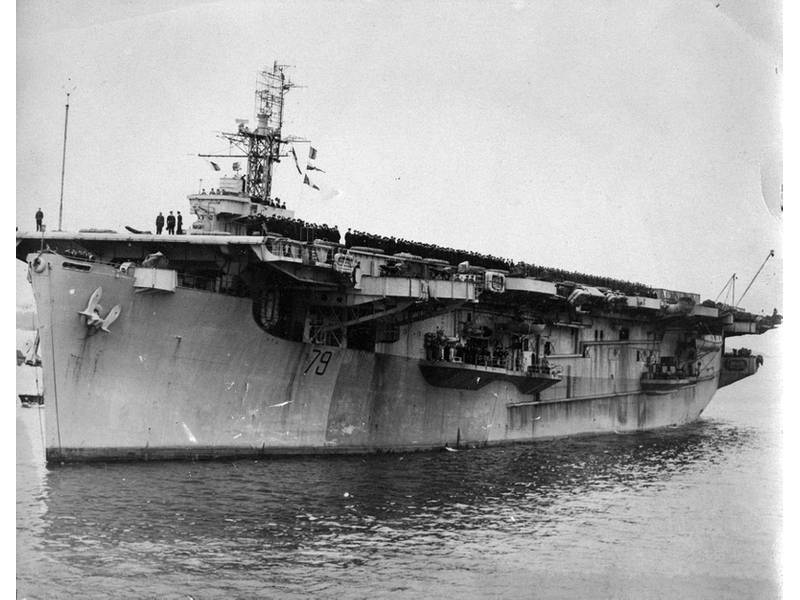Wreck Site Identified as WWII Carrier USS Ommaney Bay (CVE 79)
Naval History and Heritage Command confirmed the identity of a wreck site as USS Ommaney Bay (CVE 79) July 10. While operating in the Sulu Sea, Ommaney Bay was hit and eventually mortally wounded by a twin-engine Japanese suicide plane on Jan. 4, 1945.
NHHC’s Underwater Archaeology Branch used a combination of survey information provided by the Sea Scan Survey team and video footage provided by the DPT Scuba dive team, to confirm the identity of Ommaney Bay. This information correlated with location data for the wreck site provided to NHHC in 2019 by Vulcan, LLC (formerly Vulcan, Inc.).

“Ommaney Bay is the final resting place of American Sailors who made the ultimate sacrifice in defense of their country,” said NHHC Director Samuel J. Cox, U.S. Navy rear admiral (retired). “It is with sincere gratitude that I thank the Sea Scan Survey team; Mick Stefurak, Neil “Snake” Krumbeck and Joe Brothers for confirming the location of this wreck site. We would also like to thank the team of Australian divers from DPT Scuba; David Tipping, Chris McCran, Aimee McCran, Samir Alhafith, Heeman Lee and John Wooden for their deep diving expertise and assistance identifying the Ommaney Bay. This discovery allows the families of those lost some amount of closure and gives us all another chance to remember and honor their service to our nation.”
The Japanese kamikaze crashed into Ommaney Bay’s starboard side, releasing two bombs and causing severe damage. A series of explosions were caused by one of the bombs that entered the flight deck and detonated below, among the fully-gassed aircraft in the forward third of the hanger deck. The second bomb exploded close to the starboard side after rupturing the fire main on the second deck and passing through the hanger deck.
The order to abandon ship was given as the possibility of stored torpedo warheads exploding at any moment increased. A total of 95 Sailors were lost, including two personnel from an assisting destroyer who were killed when the torpedo warheads on Ommaney Bay finally went off.
Ommaney Bay received two battle stars for her World War II service.
The wreck of Ommaney Bay is a U.S. sunken military craft protected by U.S. law and under the jurisdiction of the Department of the Navy. While non-intrusive activities, such as remote sensing documentation, on U.S. Navy sunken military craft are allowed, any activity that may result in the disturbance of a sunken military craft must be coordinated with NHHC and, if appropriate, authorized through a relevant permitting program. Most importantly, the wreck represents the final resting place of Sailors who gave their life in defense of the nation and should be respected by all parties as a war grave.

